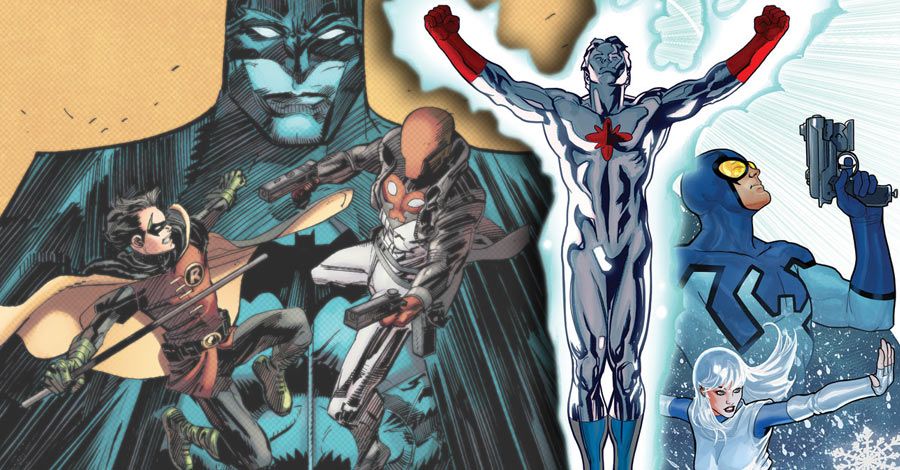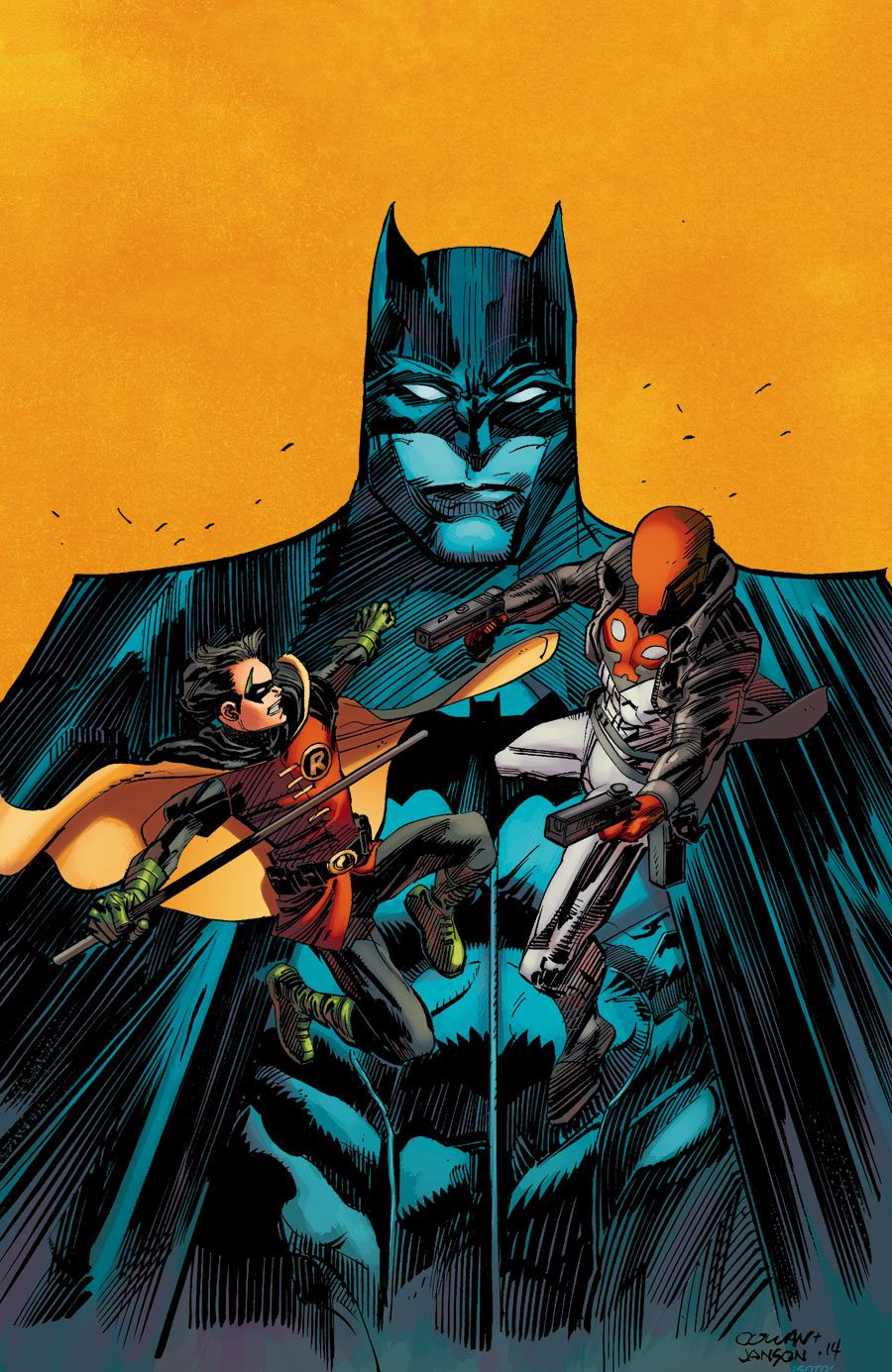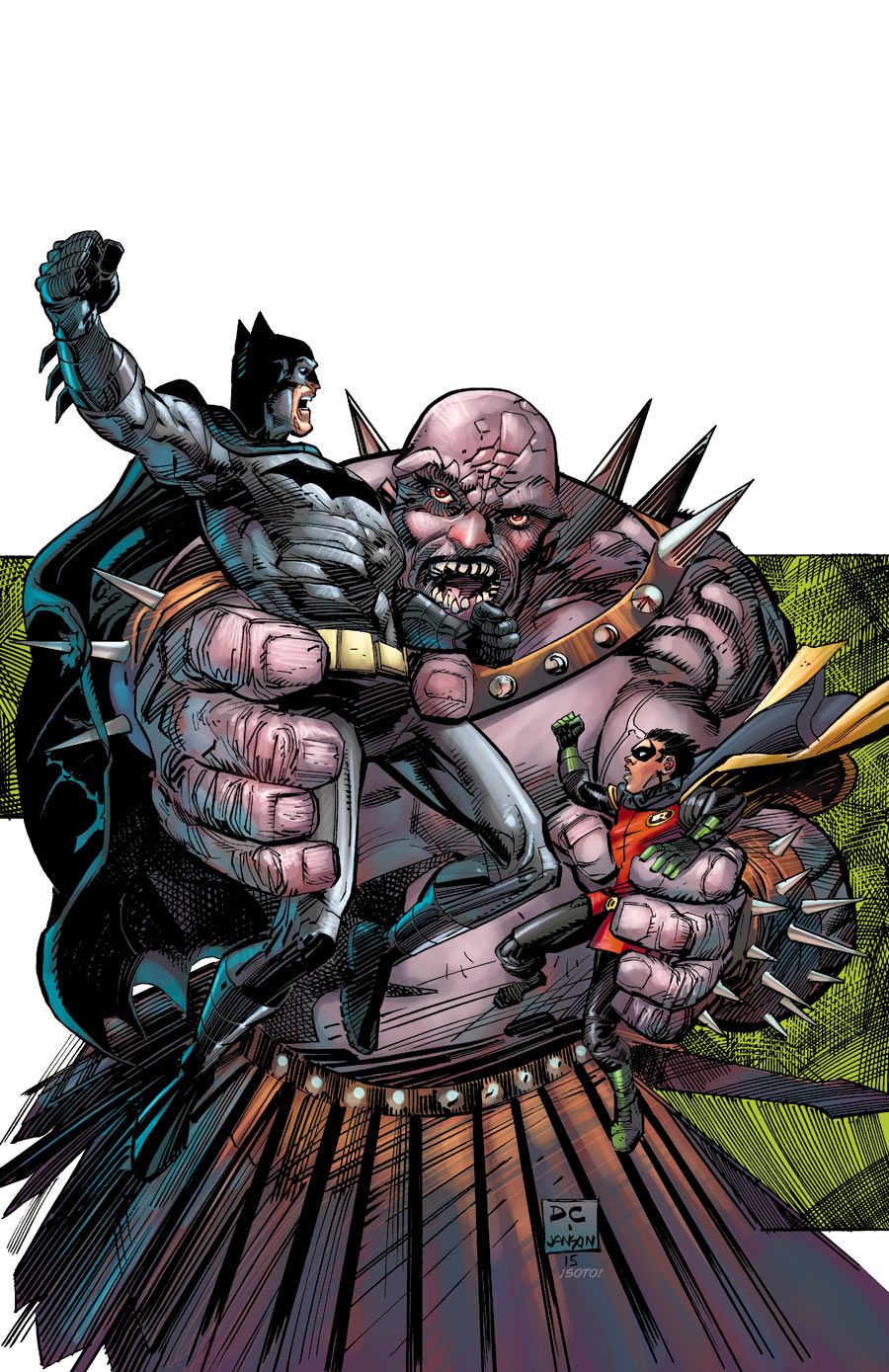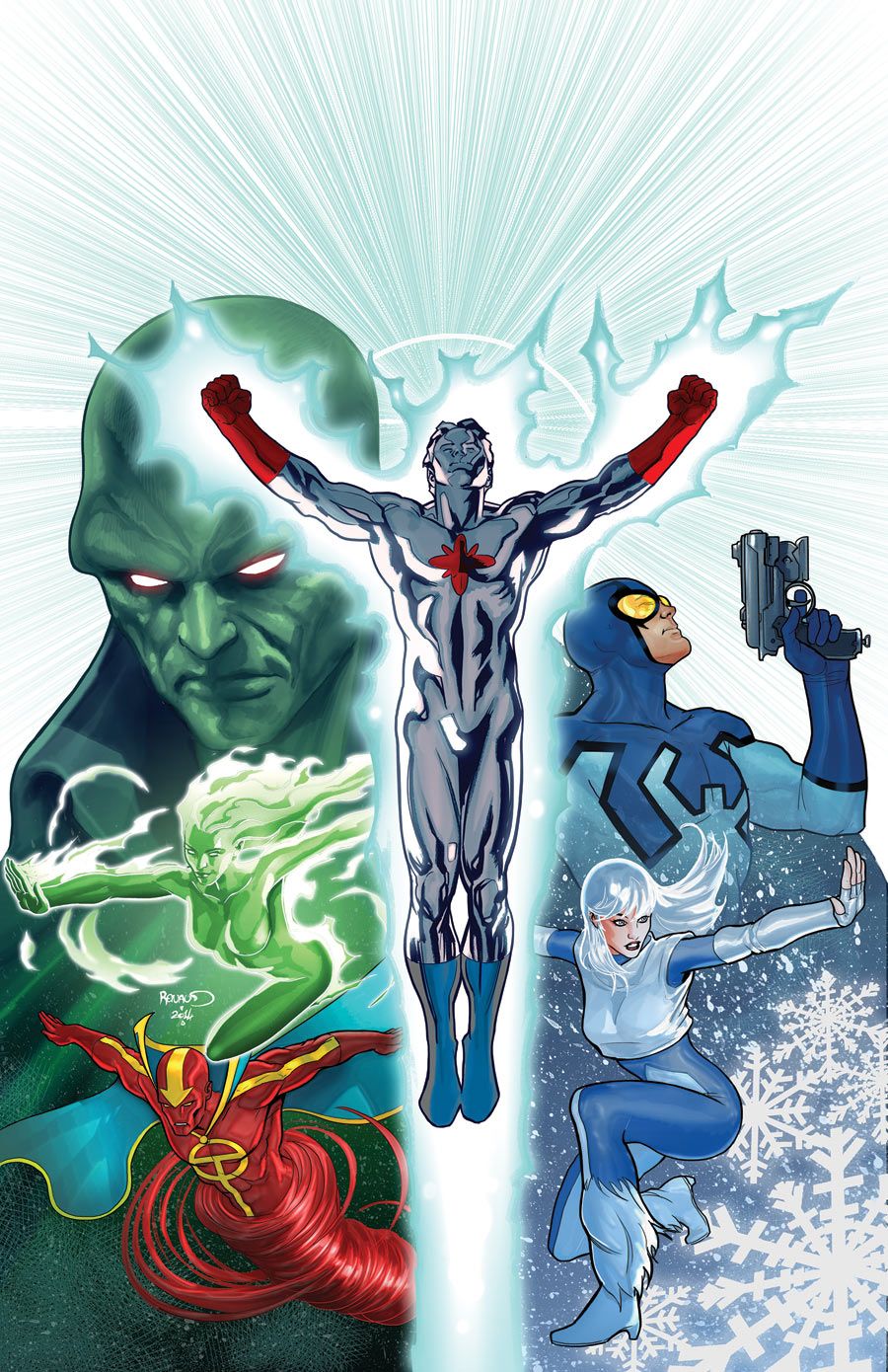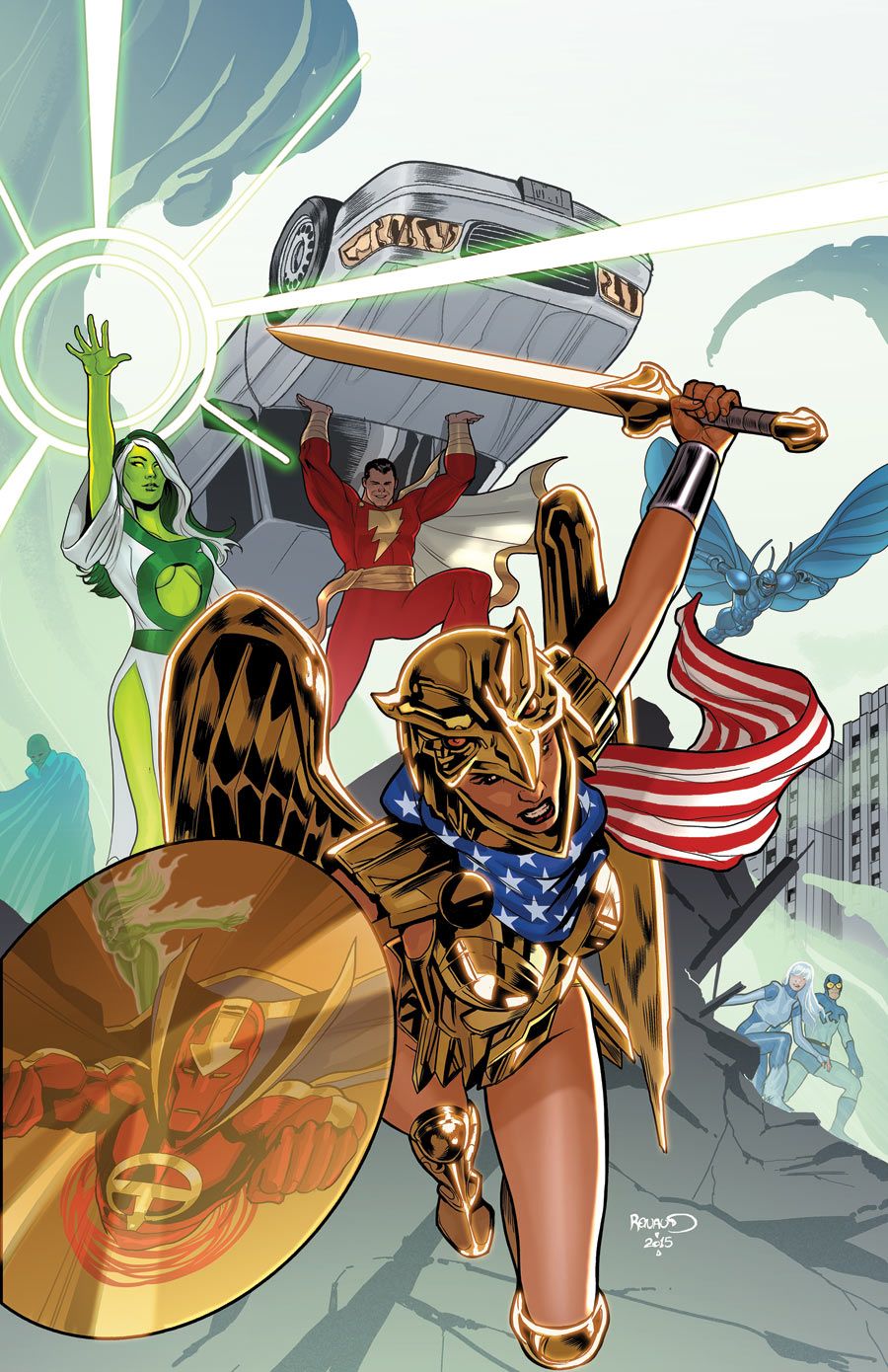Ron Marz has some experience with massive event comics, but for DC Comics' incoming "Convergence" event, the writer is heading into some unknown territory.
As the domes of a cosmic Brainiac scoop up former DCU realities across April and May, Marz will stake out two corners of comics history that he's brand new to. First up is "Convergence: Batman & Robin" -- the two-issue series that teams him with artists Denys Cowan and Klaus Janson to tell a story of the Dark Knight, Damian Wayne and Jason Todd in conflict amidst an attack by the violent villains of the Extremists. Following later in the cycle is "Convergence: Justice League International," drawn by Mike Manley, which tells the final story of the character-driven version of the premier super team.
DC Promises Big Changes as "Convergence" Winds Down in May
But even as apocalyptic crises arrive in his books, Marz is swearing off comics that submit to the churn of event storytelling. Instead, the writer told CBR News that his main focus has been crafting character-heavy stories with pieces of the DCU he's always wanted to get his hands on. Below, Marz explains his connection to the father/son drama of Batman's world, the levity in the face of "Kingdom Come" that the JLI will explore and how the end of his road stands on its own.
CBR News: Ron, your "Convergence" books come from wildly different corners of the DCU. What brought you to connect with these characters?
Ron Marz: When we came into this, part of the process was DC reaching out to various creators and asking us what we'd be interested in. There was no guarantee that you'd be working on the characters you want, but there was a sensibility of "Let's put people on books that they're excited about." And one of the things I was excited about was Batman. I mean, who doesn't want to work on Batman? So it wasn't specifically this version of "Batman & Robin" I was looking for, but I was really happy with what landed in my lap.
Meanwhile, JLI was an offer that came from [DC Co-Publisher] Dan DiDio who said he thought I'd do a great job on that as well.
So how much are you leaning on the hook of the event? Even as these worlds are captured in individual domes, there are some characters and concepts that will be crossing from one book to the next.
That's the balance you have to strike in any event-driven story. There always has to be a sense of the story standing on its own within the context of the larger overall event. I think that when you get to the point where you can't understand one without the other, it does a disservice to readers. If you're not letting them pick or choose, you're forcing them to be in for everything.
That's not the case with the "Convergence" stuff. We were very much encouraged to tell character-driven stories that stood on their own other than the overall "Convergence" setup. These are stories that begin and end in their minis and have emotional resonance. It's not just "Let's do a bunch of fight scenes." The overall idea was "Let's get under the skin of these characters and do something with some more depth to it than your typical crossover."
DiDio Compares DC's Post-"Convergence" Plans to "Infinite Crisis"
At the heart of "Batman & Robin" is not just Damian Wayne but Jason Todd as well -- both from a period in their histories where neither character was on the steadiest emotional or mental footing. Did you get a sense for one being more insane than the other?
Yeah, they both have issues. [Laughs] One of the main things that drew me to this story was figuring out the father/son triangle between them and Bruce. There is so much good character stuff to do with that. We've been telling stories about fathers and sons since Cain and Able and Adam, right? To me, "Batman & Robin" had this almost operatic quality to it as a book -- which is what Batman should always have -- in that the up close, personal character stuff gets reflected as a product of the confines of Gotham City. Hopefully this comes out as an example of when you take an internal conflict -- "Dad likes you best" -- and making it an external adventure.
The connection that story shares with the rest of "Convergence" is the inclusion of the Extremists -- a set of villains who seem to be appearing across the various mini series. What complications do they bring to that father/son dynamic?
When we were putting this together, we knew that there was going to be a conflict with a group from another DC era or world. And just like the books themselves got divided up amongst the writers, we had to divide up the antagonists. When it came to finding villains for "Batman & Robin," I really wanted to tell a story where the bad guys were bad guys. This is not a "heroes fighting heroes" scenario. This is a time where Batman, Robin and Red Hood are definitely the good guys. That demarcation is a little cl earer so that the character work would really come out of the Batman family.
And we had a lot of back and forth about which Extremists were going to end up in which books, which became this game of "If you take this one, I get that one." It was like swapping baseball cards as a kid.
With the interiors here, you seem to have won the artists lottery with Denys Cowan and Klaus Janson drawing the book.
Yeah, I felt like that too! [Laughs] I had never had to pleasure of working with Denys before, so this was a huge thrill for me. The fact that his stuff is so unique and has such a specific flavor to it -- especially with Klaus on inks -- is a huge boon to the book. I'm honored and flattered to be working with both of them.
DC Comics Aims to Diversify Lineup Post-"Convergence," Plans 24 New Series
But as I said, you can't get much different from "Batman & Robin" than a JLI book... let alone a JLI book that gets described in solicits as "the levity of the JLI team collides with the severity of the world of Kingdom Come." Can those two worlds even mesh together?
Again, it's a balance that you have to strike. You have to find the middle ground, and here it's the idea that the situation the JLI find themselves in is pretty serious. They're in Metropolis, and they're trying to hold together this city that's been cut off from everything. I tried to get in as much of the character-oriented stuff that people expect from JLI while balancing that against the narrative they find themselves in. Being on the brink of society falling apart is not a whole lot of fun and laughs, but we'll still get those character beats in there.
And adding the "Kingdom Come" characters into the mix is a fairly significant contrast to how the JLI operates. I tend to think of the JLI heroes as not quite as powerful as the Justice League of America. But the "Kingdom Come" characters bring quite a few heavy hitters to the mix. So they contrast in both style and sheer power level.
In terms of finding that common ground with the event, we know this is an end of the world story and in some ways will represent the end of this set of characters as it collides back with the main "Convergence" series. What final feeling did you want to leave the reader with?
Our marching orders were really to tell a complete, satisfying story in two issues. The idea is to have these comics feeling like a complete experience while still looking forward to what comes next. But the "What comes next" part of the equation doesn't quite factor into how we told our stories.
"Convergence: Batman & Robin" #1 arrives April 8, and "Convergence: Justice League International" #1 follows on April 15 from DC Comics.

